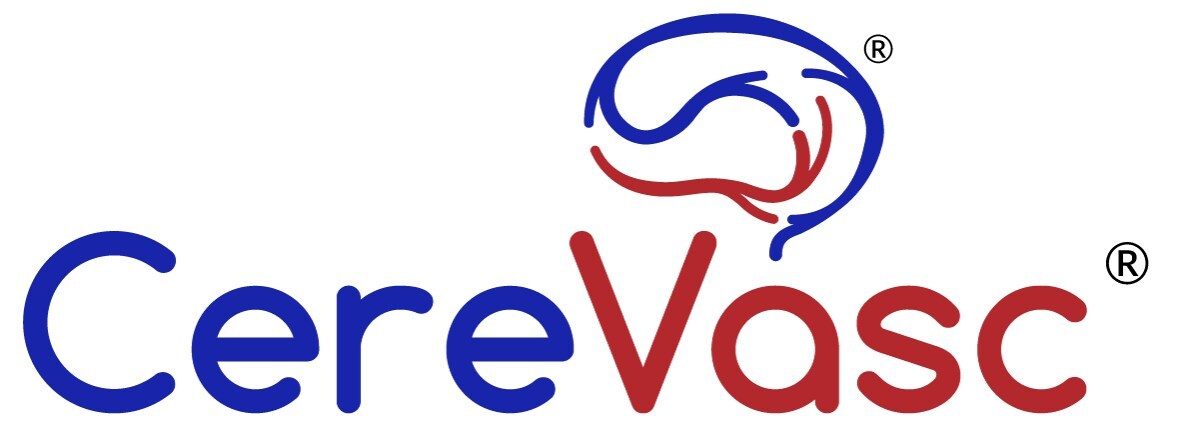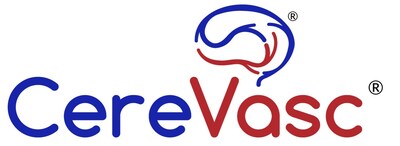
Cision PR Newswire
CereVasc Announces Journal of Molecular Therapy Publication Highlighting the eShunt® Platform as a CNS Gene Therapy Delivery Method

- Gene therapy delivered via CereVasc's endovascular delivery approach reached key targets in the central nervous system after injection into the cerebellopontine angle resulting in broad biodistribution
- The eShunt approach has the potential to provide doctors and biopharma partners with a safe, effective and minimally invasive alternative for delivering gene and cell therapies for neurological disorders
BOSTON, Sept. 25, 2024 /PRNewswire/ -- CereVasc, Inc., a clinical-stage medical device company developing novel treatments for neurological diseases, today announced the publication of a study demonstrating that its minimally invasive eShunt System may help deliver gene therapies to the central nervous system (CNS).
In the ovine model study, a standard gene therapy delivery vector — an adeno-associated virus — was successfully distributed to the brain and spinal cord. By targeting the cerebellopontine angle (CPA) cistern at the base of the brain, the location accessible by the eShunt System in ongoing clinical trials for hydrocephalus, the vector ultimately reached a host of key targets within the CNS. These results were compared to delivery via cisterna magna, a route of administration that is accompanied by potential risks of serious and possibly fatal complications in patients. The data showed administration to the CPA resulted in comparable rates of biodistribution between the two routes of administration, suggesting that the endovascular CPA approach "could offer a clinically safer and minimally invasive delivery system for CNS gene and cell-based therapies."
Titled "A minimally invasive endovascular approach to the cerebellopontine angle cistern enables broad CNS biodistribution of scAAV9-CB-GFP," the study was first published online by the journal Molecular Therapy in August 2024. The study highlights encouraging efficacy results of endovascular delivery of therapeutics to the CPA cistern, demonstrating the role that the eShunt System could play in advancing the field of CNS gene therapy. With the increasing need to identify safe, effective, and reproducible routes of administration for CNS therapeutics to treat a range of highly prevalent neurological disorders, this study represents a promising step forward in addressing this need.
In studying the eShunt System as a method for delivering gene therapy, CereVasc collaborated with researchers from the UMass Chan Medical School and Tufts Medical Center, who have deep expertise in central nervous system drug delivery, radiology and gene therapy efficacy.
Researchers used an ovine model to test the eShunt method's ability to distribute scAAV9-CB-GFP, an adeno-associated virus equipped with a green fluorescent protein to help track its journey through the body.
Under fluoroscopy, the virus was delivered into the CPA or alternatively into the cisterna magna. After delivery to the CPA, the virus reached the cerebral cortices, striatum, thalamus, midbrain, cerebellum and spinal cord, demonstrating minor liver distribution compared with distribution to the cisterna magna. The authors concluded that the eShunt System's endovascular administration into the CPA could offer a minimally invasive alternative for gene and cell-based therapies that need to reach the central nervous system.
"To successfully treat patients with neurological disorders, many gene therapies must have the ability to cross the blood-brain barrier. Currently available methods for accomplishing this come with obstacles, including invasiveness, procedure-related complications and limited effectiveness," said Dan Levangie, CereVasc Chairman & CEO. "We're very excited about these promising preclinical results, which suggest that the eShunt System delivery approach could provide biopharmaceutical and biotechnology organizations with a minimally invasive method for delivering gene therapies directly to the cortex and brain."
Reference:
Benatti HR, Anagnostakou V, Taghian T, et al. A minimally invasive endovascular approach to the cerebellopontine angle cistern enables broad CNS biodistribution of scAAV9-CB-GFP. Mol Ther. Published online August 26, 2024. https://doi.org/10.1016/j.ymthe.2024.08.024.
About CereVasc, Inc.
Located in Massachusetts' healthcare hub, CereVasc, Inc., is a clinical stage, medical device company focused on the development of novel, minimally invasive treatments for patients with neurological diseases. Its initial product, the eShunt System, encompasses first-ever, groundbreaking percutaneous transvenous-transdural access to the central nervous system intended to allow the first minimally invasive treatment for communicating hydrocephalus (CH), a potential improvement to the current standard of care. The eShunt device concept originated from Tufts Medical Center physicians Carl Heilman, MD, Neurosurgeon-in-Chief and Chair of Neurosurgery, and Adel Malek, MD, PhD, Chief of Neurovascular Surgery and Director of Cerebrovascular and Endovascular Neurosurgery. The patented eShunt System includes an endovascularly implantable cerebral spinal fluid shunt and delivery components, which are designed to treat CH without invasive surgery. For additional information, please visit our website at www.cerevasc.com.
The eShunt® Device is an investigational device and not available for sale within or outside the United States.
Company Contacts:
DJ Cass
CereVasc, Inc.
djcass@cerevasc.com
Media Contacts:
Ethan Metelenis
Precision AQ
Ethan.Metelenis@precisionaq.com
![]() View original content to download multimedia:https://www.prnewswire.com/news-releases/cerevasc-announces-journal-of-molecular-therapy-publication-highlighting-the-eshunt-platform-as-a-cns-gene-therapy-delivery-method-302258078.html
View original content to download multimedia:https://www.prnewswire.com/news-releases/cerevasc-announces-journal-of-molecular-therapy-publication-highlighting-the-eshunt-platform-as-a-cns-gene-therapy-delivery-method-302258078.html
SOURCE CereVasc

NOTE: This content is not written by or endorsed by "WGNO", its advertisers, or Nexstar Media Inc.
